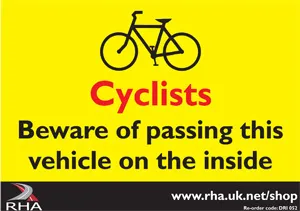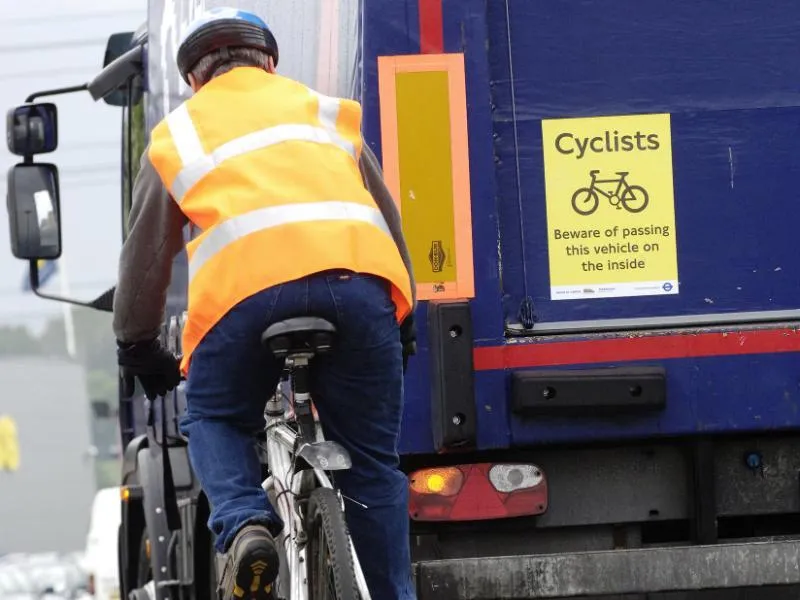Has cycling ever been more popular in the UK? From the elite level right down to the casual commuter, there’s a feeling we’re entering, or perhaps even in, a golden age of riding.
You don’t have to look too far for evidence; at the elite level, the quality of British riders lining up for the start of this year’s Tour de France – Cavendish, Wiggins, Millar, Thomas and Swift – is unprecedented, and all are capable of taking stage wins. Achievements in any sport at a world level always cascade down to inspire youngsters (and even those not so young) to try that sport, and cycling is no different.
At the recreational level, and despite the recent demise of Cycling England, investment in improving cycling provision as an alternative to motorised transport is as high as it’s ever been in the UK. London’s Barclays Cycle Hire scheme, Cycle to Work incentives and the Sky Ride events have all served to encourage people to use bikes rather than motors. Fuel prices may fluctuate, but in the long-term they’re realistically only heading in one direction. This can only mean one thing: more people taking to bikes for sport, recreation and as a means of getting from A to B.
A report in The Times last month quoted monitoring data from Transport for London which suggested cyclists had started to outnumber motorists on some of the capital’s busiest commuter routes, including Cheapside in The City. The same data showed cyclists accounted for a quarter of all traffic entering central London during morning rush hour and had even started to dictate the speed of traffic. In the first six months of the 'Boris Bikes', over 10 million kilometres – or 13 times to the moon and back – across 2.5 million journeys were clocked up.
Even taking all these statistics into account, there's still one issue which deters more people from getting on bikes: road safety. Volume of traffic, attitude of motorists towards cyclists, poor road surfaces, a lack of/poorly designed bike lanes and not enough protection against HGVs are the big problems. It’s an accumulation of factors, though, that adds up to a general feeling of vulnerability when out on roads and exposed to vehicles which, in a collision, will always leave you on the receiving end.
Underlining how big an issue road safety is, newly-released Department for Transport (DfT) figures showed that cyclist deaths on UK roads have risen for the first time in four years, from 104 in 2009 to 111 last year, with cyclists numbers up 1.2 percent on 2009. Those seriously injured also rose two percent, from 2,606 to 2,660 and shows there is still more that can be done to protect cyclists.
Strength in numbers
Despite appearing to contradict the latest DfT statistics, Charlie Lloyd, campaigns officer at the London Cycling Campaign – a charity that works to benefit cyclists in the city – thinks it’s all about strength in numbers. “The more cyclists there are, the safer it gets,” he said. “Statistics show that as numbers increase, casualties fall.” His opinion is backed by the CTC’s Safety in Numbers campaign, which has found that Denmark – the European country whose inhabitants cycle the furthest each year (900km each, on average) – has the lowest fatality rate in Europe. In fact, the CTC's study shows that the number of cyclist deaths in each European country is inversely proportional to the average distance cycled by each person per year.
The same is true on a regional basis in England: areas with the lowest percentage of cycling commuters (the worst offender is Blackburn-with-Darwen) have the highest serious injury and death rates, while York, at the opposite end, has the lowest. Back on a European scale, the Cycling in Numbers campaign predicts that a 100 percent increase in cyclists would result in a reduction of casualties by a third. Between 1980 and 2005 in the Netherlands, an increase in cycling of 45 percent resulted in 58 percent fewer fatalities. Since the congestion charge was introduced in London, there’s been a 91 percent increase in bike users, with accidents down a third.
The CTC give three reasons why cycling in numbers makes it a safer activity. Firsly, as drivers grow more aware of cyclists, they become better at anticipating their behaviour. Secondly, more people cycling means a greater drive to improve conditions for cyclists, and finally, drivers are more likely to ride bikes themselves, which means they’ll be more sympathetic towards how their driving affects cyclists. This final reason was backed up by Lloyd: “Of course, safety depends on the attitudes of every other road user, so we believe it’s important that everyone should have cycling training before they drive. That way all motorists know what it’s like from the perspective of a cyclist.”
"Don't hide on the inside"
Lorries pose a particular danger to bike riders, with around half of all cyclist fatalities on London roads caused by them. Work in this area is already underway, with the CTC putting on training for HGV drivers. A petition appealing for all lorry drivers in London to be given similar training, organised by London Cycling Campaign, was recently handed over to Mayor of London Boris Johnson with 10,000 signatures. A recent Private Members' Bill from Berwick-upon-Tweed MP Sir Alan Beith put forward the idea of sensors being fitted to HGVs to detect cyclists, after a string of deaths.
However, the Royal Haulage Association (RHA) – the organisation who campaign and provide advice for workers in the industry – aren't convinced sensors are the way to go. "We're concerned about excessive reliance on technology and overloading the driver with information points in a way that could be seriously counter-productive," Chrys Rampley, infrastructure manager at RHA, told BikeRadar. "Mirrors, cameras and sensors, and the best training in the world will not prevent accidents when cyclists take excessive risks."

The RHA warning sticker that UK cyclists should be familiar with
"Don’t hide on the inside" is their key message to cyclists, particularly when a truck is turning left. Rampley, who also sits on Transport for London's Cycle Risk Group, added: "It seems that such manoeuvres by cyclists are sometimes part of deliberate risk-taking and sometimes because the cyclist is unaware of the risks. But it's dangerous cycling and stressful for professional drivers who look out for such dangers as part of their job."
Training for all motorists to improve their driving among cyclists is essential to persuade more people to use a bike, according to CTC policy co-ordinator Chris Peck. “Cycling is widely perceived as dangerous, particularly by people whose only experience of cyclists is peering at them through the windscreen when nervously attempting to overtake them on a narrow or busy road,” he said. “If we're going to get more people to take up cycling we not only need to make cycling look more appealing, we also need to provide them with a welcoming and comfortable space if and when they take it up.”
Chris believes there's room to change non-cyclists' perceptions of cycling as a dangerous activity in the UK. “Here’s a fact that surprises many people: per mile traveled, you're more likely to be killed walking than you are cycling,” he said. “Feeling safer isn’t necessarily the same as being safer – but clearly that perception of safety is equally (if not more) important than how safe cycling really is. Many of our members report how wonderful it is to cycle in France and how courteous many of the drivers are, yet the statistics show that cycling in France is probably less safe than it is in the UK.”
Driver behaviour
So how could we go about improving driver behaviour? The CTC have lobbied the Department for Transport to include more reference to cycling in the practical and theory driving tests, and Peck says he knows of driving instructors who can tell the difference between pupils who've had cycle training and those who haven’t, just by how observant and road aware they are. Making Bikeability – the modern equivalent of the cycling proficiency test – mandatory for teenagers at level three is another change they’d like to see.
But Chris Lee, Communications Manager at the Driving Standards Agency (DSA), said the study towards both driving theory and practical tests already cover the needs of cyclists thoroughly in Rules 211-213 of the Highway Code. He added they acknowledge cyclists as vulnerable road users, and that an appreciation of such users “is a key factor of safe and responsible driving.”
BikeRadar editor-in-chief John Stevenson agrees that driver behaviour is the number one area to look at, and thinks we could learn a thing or two from our European neighbours. “If drivers of motor vehicles gave us more space when they passed, didn't get so close behind and generally acted as if they were aware of our presence, we'd all feel a lot safer, and we'd probably be a lot safer too,” he said. “I'm not blaming drivers though – so few people ride a bike before they get a driving licence that UK drivers don't have the understanding from experience that you find in Europe. I'm convinced that's the main difference; in countries like France, cycling is still part of everyday life, so drivers are likely to be riders too and will understand how to act around them.”
John suggests an increase in bike paths would get more people cycling, although it isn’t his preference. “I'm not a fan of segregated paths as a transport solution; we must retain our right to ride on the roads," he said. "But they encourage people to get on a bike in the first place, and in the long-term that's a good thing for all of us."
The Safety in Numbers study cites a major study from Copenhagen which found that road safety for all users declined following the introduction of cycle tracks. However, the city’s policy was to keep on building them because they increased numbers, and people felt safer on them.
One of the most common causes of complaint among cyclists is the behaviour of motorists. We’ve lost count of the number of times we've been honked at – not because of bad riding, but simply to startle. It’s annoying for sure, but by no means the biggest gripe. We’re reading more and more about cyclists wearing helmet cameras in a bid to catch out irresponsible drivers. The Daily Mail this week told the story of a man who, after being knocked off his bike by a car, fitted a camera to his helmet to catch any drivers cutting him up. What he didn’t bargain for was that it would be a police officer doing it.
But can we really do anything about near misses? It’s doubtful, according to cycling coach Ric Stern, who's had several run-ins with bad drivers. “It appears from brief discussions with the police that the issue appears to be in having to satisfy the Crown Prosecution Service (CPS),” he said. “The police don't want to do anything about near misses because nothing will happen. They're placing the blame with the CPS. It’ll be interesting to see how helmet cameras affect this issue if a case eventually ends up in court."
This isn't a one-sided problem, however, and some cyclists can do more to endear themselves to motorists. Obeying the Highway Code only when it suits is a complaint we’ve often heard from non-cyclists. We share the roads with motorists, so that means playing by the same rules – not running red lights and not riding on pavements, to name a couple.
What is certain is that the drive to make motorists more aware of cyclists' vulnerability is gathering momentum. As bike riding continues to grow in popularity, that can only be a good thing.

